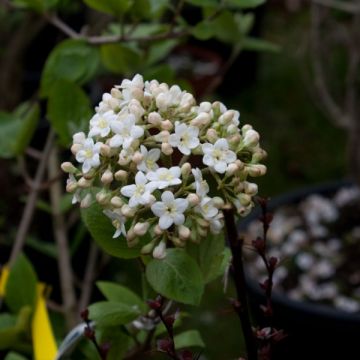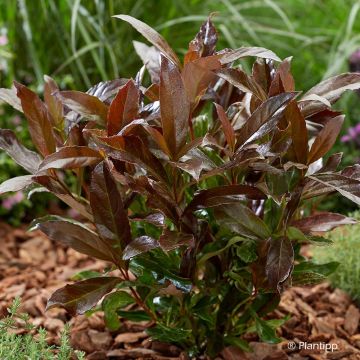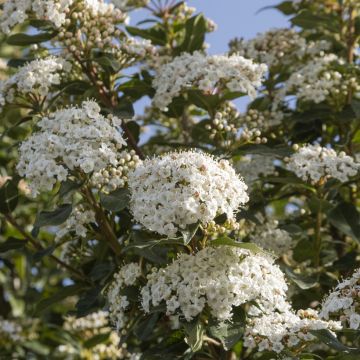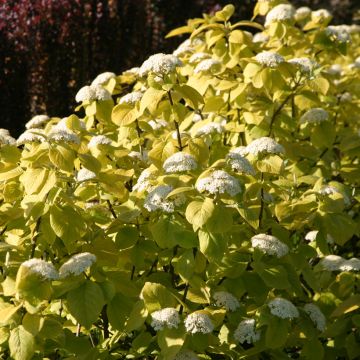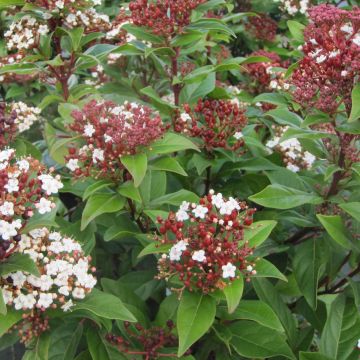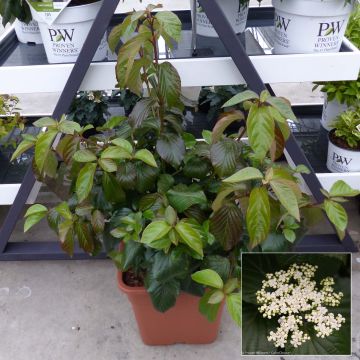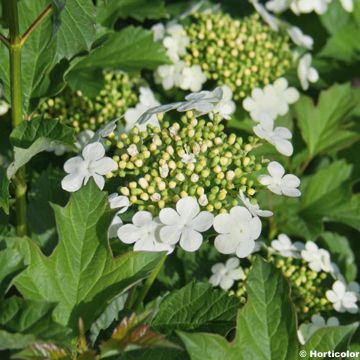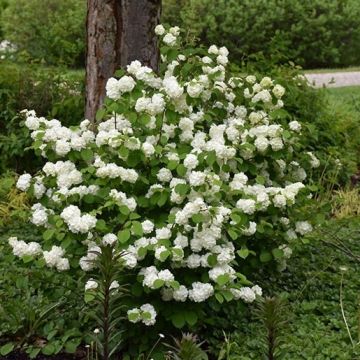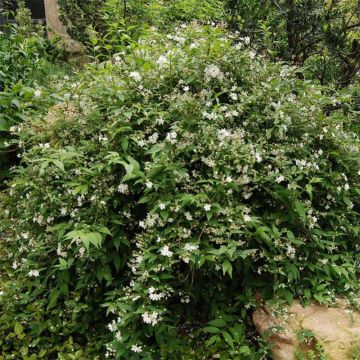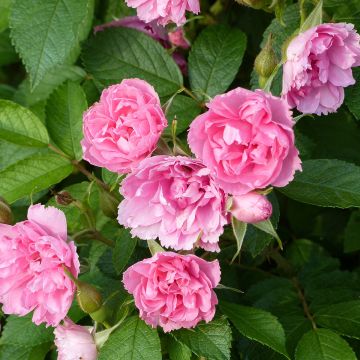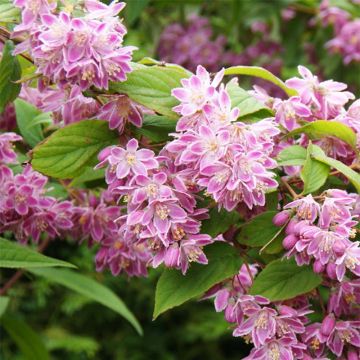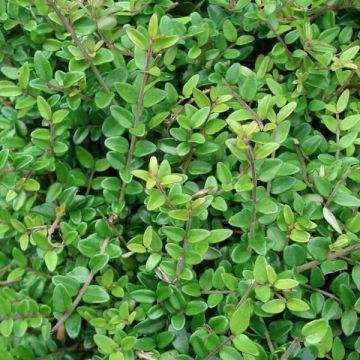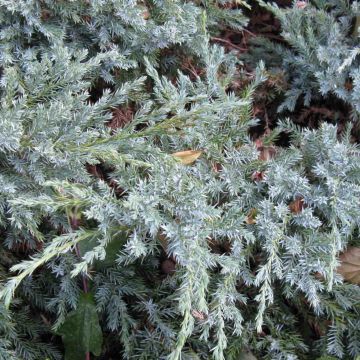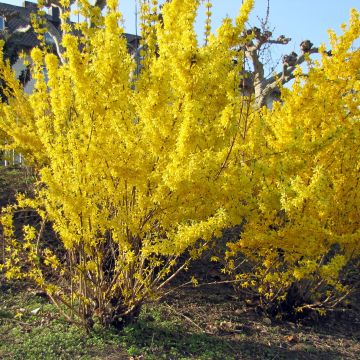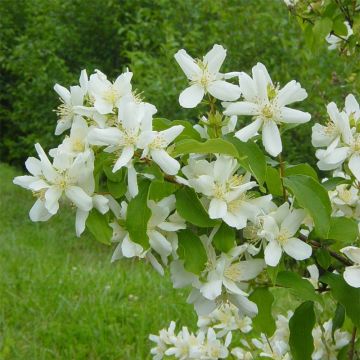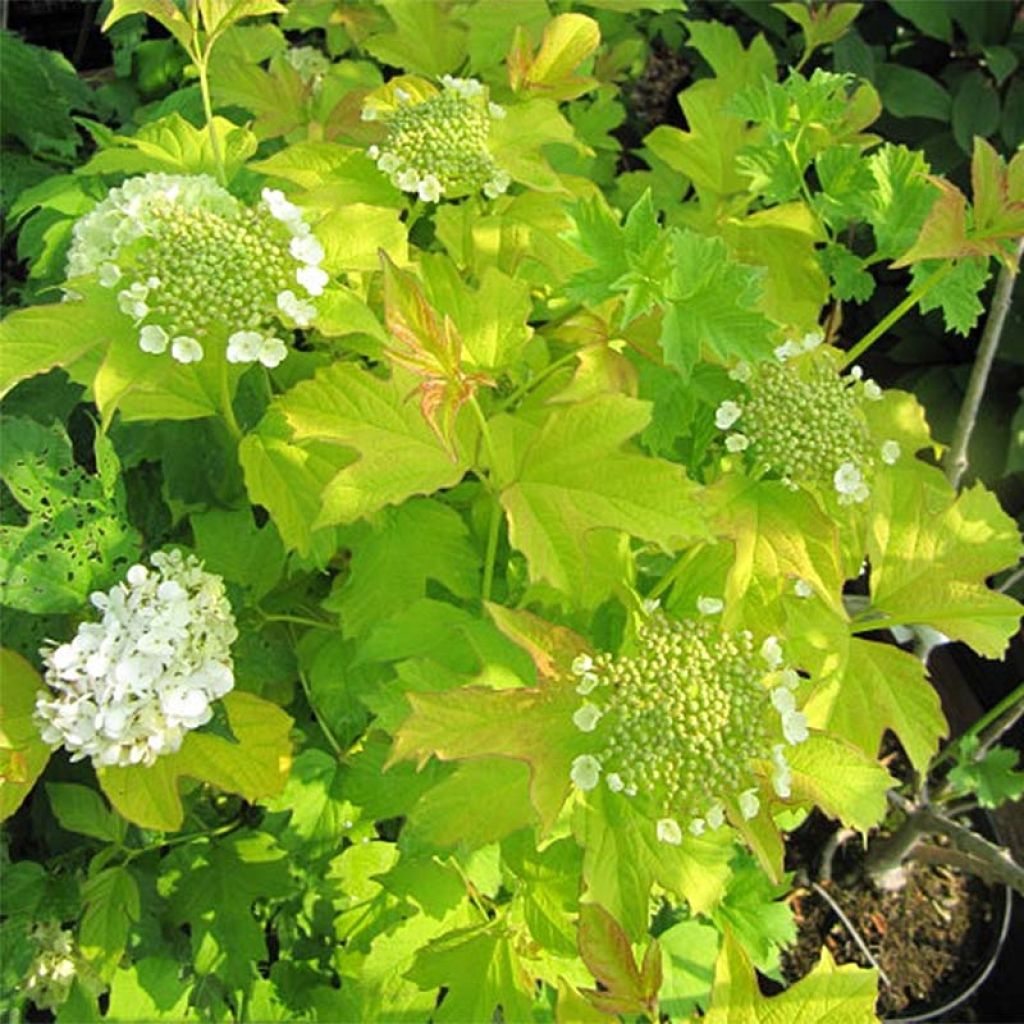

Viburnum opulus Park Harvest
Viburnum opulus Park Harvest
Viburnum opulus Park Harvest
Guelder Rose, Cramp Bark, European Cranberry Bush, Snowball Tree, Water Elder
This item cannot be shipped to the selected country
Delivery charge from €5.90
More information
Schedule delivery date,
and select date in basket
This plant carries a 24 months recovery warranty
More information
We guarantee the quality of our plants for a full growing cycle, and will replace at our expense any plant that fails to recover under normal climatic and planting conditions.
From €5.90 for pickup delivery and €6.90 for home delivery
Express home delivery from €8.90.
Does this plant fit my garden?
Set up your Plantfit profile →
Description
Viburnum opulus Park Harvest is a variety of Snowball Tree that will seduce you with the beauty of its colour-changing foliage. Its leaves, golden-yellow with copper margins in spring, turn slightly greener in summer and become wine-red in autumn. Its white spring flowering harmonises perfectly with its golden foliage, while its shiny red fruits contribute to the autumn colour display. It is a very hardy and easy-to-grow shrub in any soil that is not too dry. With a beautiful stature, maintaining its appeal for 9 months out of 12 and sought after by birds, it can be placed in a shrubbery or in a free hedge.
The Guelder Rose, sometimes called European Cranberry Bush or Snowball Tree depending on the region, is a deciduous shrub native to Europe and North Africa. It belongs to the Caprifoliaceae family along with honeysuckle, for example. It shares with it a preference for damp woodland soils, venturing into marshes at an altitude below 1600 m (5250 ft). The 'Park Harvest' cultivar stands out for its remarkably colourful spring foliage. This bushy shrub will reach an average height of 2.75 m (9 ft) with a spread of 1.5 m (5 ft). Its branches readily layer on contact with the ground, further enhancing its bushy habit. Its wrinkled, rough foliage is initially yellow with a brick-red margin, then becomes greener in summer, and finally turns purplish-violet in autumn. The leaf is divided into 3 to 5 acute lobes with dentate margins. It blooms in May-June, in the form of flattened corymbs measuring 6 to 8 cm (2 to 3 in) in diameter; they are compound, just like in hydrangeas, with a crown of larger sterile florets surrounding a central disc of fertile florets in the shape of buds. This fragrant flowering is very attractive to bees and provides nectar. The fruiting is abundant and decorative, in the form of round berries, 1 cm (0.4 in) in diameter, of a bright red colour, much appreciated by birds.
Viburnum opulus Park Harvest is a completely hardy and low-maintenance plant. It thrives in sunny or semi-shaded positions and flourishes in any ordinary soil that is rather moist, even limestone and clay. It can be used as a focal point in small gardens, in hedges or in flower beds in larger gardens. In a hedge, it can be combined with a variety of shrubs chosen for their autumn foliage (European spindle, winged euonymus, smoke bush, oakleaf hydrangea, Physocarpus), their spring flowering (mock oranges, deutzias, lilacs, Canadian serviceberry), or for their attractive fruits (chokeberries, beautyberries, snowberries, Chinese quince, etc.). Its graceful inflorescences can be included in your spring bouquets.
Report an error about the product description
Viburnum opulus Park Harvest in pictures




Plant habit
Flowering
Foliage
Botanical data
Viburnum
opulus
Park Harvest
Caprifoliaceae
Guelder Rose, Cramp Bark, European Cranberry Bush, Snowball Tree, Water Elder
Cultivar or hybrid
Other Viburnum
Planting and care
Viburnum opulus Park Harvest thrives in a sunny but not scorching position or in partial shade. While it prefers a moist, light soil, it can adapt to any good garden soil that is not too dry, and even clay or slightly chalky soil. If the soil is very chalky, you can add some heath soil to the planting substrate. Generous watering after planting and during the first few weeks after its establishment will ensure good growth. Pruning can be done after flowering to maintain a compact habit.
Planting period
Intended location
Care
This item has not been reviewed yet - be the first to leave a review about it.
Foolproof Shrubs
Haven't found what you were looking for?
Hardiness is the lowest winter temperature a plant can endure without suffering serious damage or even dying. However, hardiness is affected by location (a sheltered area, such as a patio), protection (winter cover) and soil type (hardiness is improved by well-drained soil).

Photo Sharing Terms & Conditions
In order to encourage gardeners to interact and share their experiences, Promesse de fleurs offers various media enabling content to be uploaded onto its Site - in particular via the ‘Photo sharing’ module.
The User agrees to refrain from:
- Posting any content that is illegal, prejudicial, insulting, racist, inciteful to hatred, revisionist, contrary to public decency, that infringes on privacy or on the privacy rights of third parties, in particular the publicity rights of persons and goods, intellectual property rights, or the right to privacy.
- Submitting content on behalf of a third party;
- Impersonate the identity of a third party and/or publish any personal information about a third party;
In general, the User undertakes to refrain from any unethical behaviour.
All Content (in particular text, comments, files, images, photos, videos, creative works, etc.), which may be subject to property or intellectual property rights, image or other private rights, shall remain the property of the User, subject to the limited rights granted by the terms of the licence granted by Promesse de fleurs as stated below. Users are at liberty to publish or not to publish such Content on the Site, notably via the ‘Photo Sharing’ facility, and accept that this Content shall be made public and freely accessible, notably on the Internet.
Users further acknowledge, undertake to have ,and guarantee that they hold all necessary rights and permissions to publish such material on the Site, in particular with regard to the legislation in force pertaining to any privacy, property, intellectual property, image, or contractual rights, or rights of any other nature. By publishing such Content on the Site, Users acknowledge accepting full liability as publishers of the Content within the meaning of the law, and grant Promesse de fleurs, free of charge, an inclusive, worldwide licence for the said Content for the entire duration of its publication, including all reproduction, representation, up/downloading, displaying, performing, transmission, and storage rights.
Users also grant permission for their name to be linked to the Content and accept that this link may not always be made available.
By engaging in posting material, Users consent to their Content becoming automatically accessible on the Internet, in particular on other sites and/or blogs and/or web pages of the Promesse de fleurs site, including in particular social pages and the Promesse de fleurs catalogue.
Users may secure the removal of entrusted content free of charge by issuing a simple request via our contact form.
The flowering period indicated on our website applies to countries and regions located in USDA zone 8 (France, the United Kingdom, Ireland, the Netherlands, etc.)
It will vary according to where you live:
- In zones 9 to 10 (Italy, Spain, Greece, etc.), flowering will occur about 2 to 4 weeks earlier.
- In zones 6 to 7 (Germany, Poland, Slovenia, and lower mountainous regions), flowering will be delayed by 2 to 3 weeks.
- In zone 5 (Central Europe, Scandinavia), blooming will be delayed by 3 to 5 weeks.
In temperate climates, pruning of spring-flowering shrubs (forsythia, spireas, etc.) should be done just after flowering.
Pruning of summer-flowering shrubs (Indian Lilac, Perovskia, etc.) can be done in winter or spring.
In cold regions as well as with frost-sensitive plants, avoid pruning too early when severe frosts may still occur.
The planting period indicated on our website applies to countries and regions located in USDA zone 8 (France, United Kingdom, Ireland, Netherlands).
It will vary according to where you live:
- In Mediterranean zones (Marseille, Madrid, Milan, etc.), autumn and winter are the best planting periods.
- In continental zones (Strasbourg, Munich, Vienna, etc.), delay planting by 2 to 3 weeks in spring and bring it forward by 2 to 4 weeks in autumn.
- In mountainous regions (the Alps, Pyrenees, Carpathians, etc.), it is best to plant in late spring (May-June) or late summer (August-September).
The harvesting period indicated on our website applies to countries and regions in USDA zone 8 (France, England, Ireland, the Netherlands).
In colder areas (Scandinavia, Poland, Austria...) fruit and vegetable harvests are likely to be delayed by 3-4 weeks.
In warmer areas (Italy, Spain, Greece, etc.), harvesting will probably take place earlier, depending on weather conditions.
The sowing periods indicated on our website apply to countries and regions within USDA Zone 8 (France, UK, Ireland, Netherlands).
In colder areas (Scandinavia, Poland, Austria...), delay any outdoor sowing by 3-4 weeks, or sow under glass.
In warmer climes (Italy, Spain, Greece, etc.), bring outdoor sowing forward by a few weeks.

































